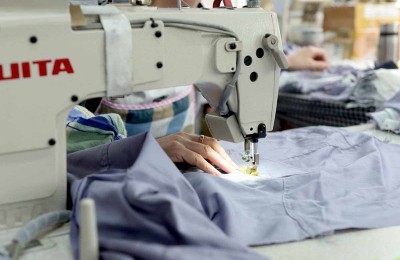The Southern Xinjiang Division adopts the “dry sowing and wet harvesting” technology on a large scale to “save” 7 West Lakes in 845,000 acres of cotton fields in one year
Early in the morning of April 18, Abdul Aishan, an employee of the 16th Company of the 51st Regiment of the 3rd Division, was busy in his cotton field, preparing for the second drip irrigation after sowing.
Looking at the cotton seedlings sprouting out of the ground in front of him, Abdul Aishan was filled with joy: “It used to take 7 to 10 days for cotton seedlings to emerge. This year’s sowing has adopted the ‘dry sowing and wet sowing’ technology, and it can be done in just 4 days.” Seedlings emerge, and there is no need to dig, break or irrigate the land before sowing, saving time, effort and water.”
The “dry seeding and wet seeding” technology that Abdu Aishan was full of praise for, that is, the “drip under the film, moisture storage and desalination” cotton planting technology, has been widely promoted in the southern Xinjiang Reclamation Area of the Corps this year, with a total of 845,000 acres of cotton fields using it. got this technology. Calculated based on data from the Northern Xinjiang Reclamation Area and the previous small-area planting in the Southern Xinjiang Division, cotton fields sown using the “dry sowing and wet seeding” technology can save an average of 120 cubic meters of water per mu, and the total water saving of 845,000 acres of cotton fields exceeds 100 million cubic meters. meters, equivalent to the water storage capacity of 7 West Lakes in Hangzhou.
Most of the Corps’ reclamation areas are located on the edge of the desert and lack water resources. In order to realize the sustainable development of agriculture, generations of XPCC people have unremittingly explored and practiced, from sprinkler irrigation, spring irrigation, self-pressure micro-head hose irrigation to under-film drip irrigation, and have embarked on an agricultural water-saving path with XPCC characteristics. The “dry sowing and wet out” technology is a new water-saving and yield-increasing technology promoted and applied by the Corps in the new era. After applying this technology, cotton fields no longer need winter irrigation and spring irrigation and can be sown directly. After sowing, water is provided by drip irrigation under the film. , not only saves a lot of water resources, but also effectively improves the cotton seed emergence rate.
In recent years, the “dry sowing and wet seeding” technology has been widely promoted and applied in the northern Xinjiang reclamation area of the Corps, but it has encountered bottlenecks in the process of promotion and application in southern Xinjiang. Investigating the reason, Luo Honghai, a professor of the Cotton Efficient Cultivation Technology Service Team of Shihezi University, said that due to the high saline-alkali content of the soil in the southern Xinjiang reclamation area, if winter irrigation and spring irrigation are not carried out to suppress the saline alkali, it will lead to low cotton seedling emergence rate and poor cotton seedlings. Poor growth, coupled with unfavorable factors such as low soil moisture content in the southern Xinjiang reclamation area and frequent strong winds in spring, have affected the promotion and application of the “dry sowing and wet seeding” technology in the southern Xinjiang reclamation area.
In order to solve the problem of “dry seeding and wet seeding” technology in the southern Xinjiang reclamation area, the Corps organized scientific research institutes and universities such as Shihezi University, Tarim University, Xinjiang Academy of Agricultural Reclamation Sciences, and the Third Division Agricultural Sciences Institute to actively explore and send out A large number of cotton planting experts went deep into the reclamation areas of southern Xinjiang to study and solve the problems in the promotion and application of “dry sowing and wet planting” technology.
Luo Honghai told reporters that after years of hard work, the team has figured out a set of cotton planting and management methods suitable for the southern Xinjiang reclamation area. The time is now ripe to promote the “dry sowing and wet planting” technology in the southern Xinjiang reclamation area on a large scale. “We guide cotton growers to choose cotton seeds with strong salt-alkali resistance, and gravity-suppress the soil before sowing to improve the compactness of the soil in the sowing layer. At the same time, we adjust the position of the drip irrigation belt, soil sealing technology, water and fertilizer dosage, and drip irrigation frequency. , can ensure the smooth emergence of cotton seeds, the water consumption is only 20% of the traditional sowing method, and the average yield of seed cotton per mu of cotton field can be at least 50 kilograms.” Luo Honghai said.
AAA
Disclaimer:
Disclaimer: Some of the texts, pictures, audios, and videos of some articles published on this site are from the Internet and do not represent the views of this site. The copyrights belong to the original authors. If you find that the information reproduced on this website infringes upon your rights and interests, please contact us and we will change or delete it as soon as possible.
AA






